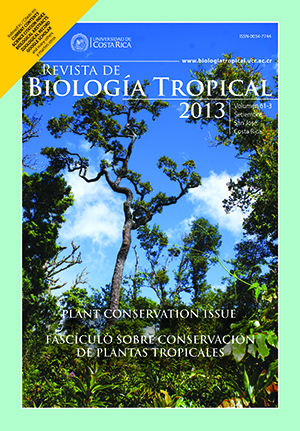Abstract
The knowledge about the existence of annual tree rings in tropical trees, which was already found at the beginning of the last century, was ignored by many scientists for a long time. Wood samples of 80 tree species from seven different sites belonging to Satipo and Chanchamayo provinces in Central Forest, Perú. Wood slices were taken at 1.30m height, following the Peruvian Technical Norms (NTP) 251-008, COPANT norms 30:1-019 and IAWA (1989). Results showed that 24 of the 80 tree species analyzed showed a potential for dendrocronological studies, 25 had problems for growth-rings analysis, and 31 did not have potential. The problems most frequently found were: barely visible or irregular ring growth, parenchyma bands and multiseriate rays difficult to be identified in rings growth. The “T” Student test showed that the significant variation in vessel and fiber diameters between growth zones (Early-wood and late-wood) of species with potential for dendrocronology, do have a periodic cells production, so is possible to suggest the annual formation of each growth-ring. However, those species without potential to dendrocronology may be influenced by of a lot of factors, such as biotic and abiotic conditions of environment, as well as the genetic aspect of each species.##plugins.facebook.comentarios##
Downloads
Download data is not yet available.






